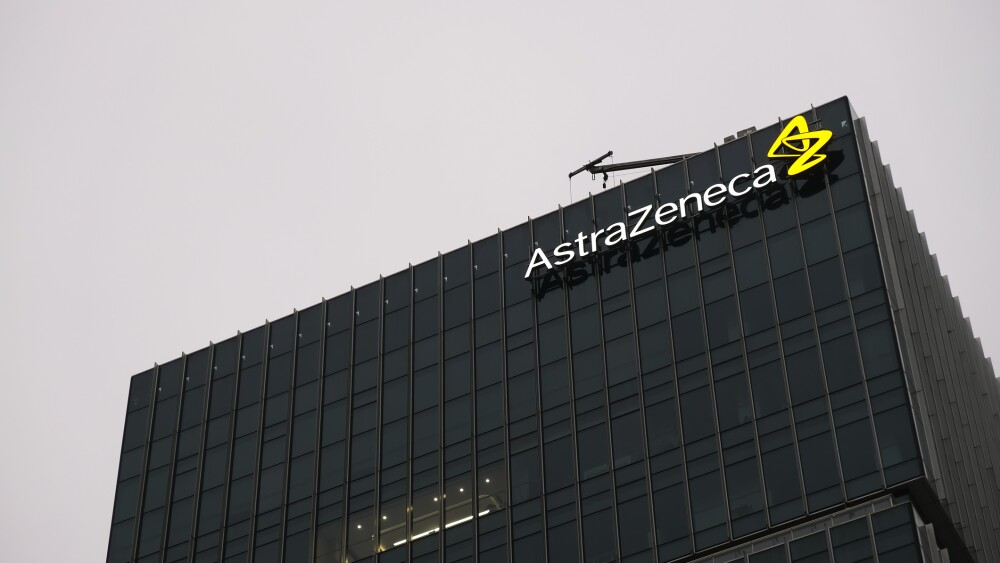Traveler’s Diarrhea Market Outlook 2025-2035:
The 7 major traveler’s diarrhea market reached a value of USD 1,314.6 Million in 2024. Looking forward, IMARC Group expects the 7MM to reach USD 2,311.3 Million by 2035, exhibiting a growth rate (CAGR) of 5.26% during 2025-2035. The market is driven by the emerging popularity of oral hydration formulas since they can optimize fluid absorption in the intestines, thereby quickly replenishing electrolytes in the body.
Advances in Early Detection and Diagnostic Technologies: Driving the Traveler’s Diarrhea Market
Ongoing innovations and developments in early detection and diagnostic technologies for traveler’s diarrhea sustain the market growth. It results in rapid pathogen detection, focused therapy, and improved patient care. The most remarkable advances in molecular diagnostic technologies, like polymerase chain reaction (PCR) and multiplex PCR panel assays, allow for extremely sensitive and specific pathogen detection in mere hours. They provide scaling detection of multiple causative pathogens like Escherichia coli (ETEC), Campylobacter, Shigella, and norovirus through a single test, thereby replacing diagnostic hesitation and early-targeting therapy possibilities. Another innovative and strong feature of POCRDTs is the immediate generation of results without having to refer to sophisticated laboratory facilities. This is particularly useful in remote or traveler-outbreak regions that restrict access. NGS and metagenomic diagnostics have been invaluable internationally for the detection of newly emerging pathogens, as well as in tracking antimicrobial resistance patterns for personalized treatment regimens. Using artificial intelligence (AI) and machine learning (ML) algorithms on diagnostic platforms facilitated real-time surveillance and predictive analysis, which will result in the early detection of outbreaks and improved disease control. The evolution of molecular diagnostics comes with AI-enabled platforms and rapid test technologies. Early diagnosis and control of traveler’s diarrhea become more effective with increasing market expansion, as well as preparedness to fight against travel-borne infectious diseases across the world.
Request a PDF Sample Report: https://www.imarcgroup.com/travelers-diarrhea-market/requestsample
Development of Novel Therapies and Pharmacological Treatments: Contributing to Market Expansion
The development of new treatments and pharmacologic agents to treat the illness, which reduce recovery time, and concerns about antibiotic resistance facilitate the growth of the market. Previously treated with traditional oral rehydration therapy (ORT), antibiotics, and antimotility agents, the landscape is currently changing based on new targeted treatments and microbiome-directed therapies with improved clinical effectiveness. The greatest development has been the introduction of non-antibiotic treatment agents such as rifamycin SV (Aemcolo), a gut-restricted agent with selective and minimal systemic side effects and a very limited risk for antimicrobial resistance. Unlike broad-spectrum antibiotics, rifamycin SV is directed selectively to the gastrointestinal tract and serves as a safer, more effective bacteriolytic agent for Travel diarrhea treatment. Another area of research with potential is the introduction of microbiome-directed treatments like probiotics and fecal microbiota transplants (FMTs) to correct gut flora balance and prevent recurrent infection. In addition, vaccine development to target frequent pathogens like enterotoxigenic Escherichia coli (ETEC) and Campylobacter jejuni is in progress, with candidates like ETVAX and Dukoral promising the ability to prevent traveler’s diarrhea from occurring. Also, immune-modulating medication and new antisecretory agents are emerging to treat intestinal inflammation and excess fluid loss, with a new option for the control of symptoms. The growing emphasis on precision medicine, pathogen-directed therapy, and antimicrobial stewardship is revolutionizing the face of future treatment of traveler’s diarrhea.
Buy Full Report: https://www.imarcgroup.com/checkout?id=7720&method=809
Marketed Therapies in Traveler’s Diarrhea Market
Aemcolo (Rifamycin): RedHill Biopharma
AEMCOLO is a rifamycin-based antibiotic used to treat travelers’ diarrhea caused by noninvasive strains of Escherichia coli in adults. Rifamycins, like all other members of this group, have an antibacterial mode of action based on the suppression of RNA production. This method of action is accomplished through strong binding to the DNA-dependent RNA polymerase of prokaryotes. The inhibition of RNA synthesis is expected to be associated with the initiation step of the process, which involves stacking interactions between the naphthalene ring and the aromatic moiety in the polymerase.
Xifaxan (Rifaximin): Alfasigma
Xifaxan (Rifaximin) is a rifamycin-based non-systemic antibiotic indicated for the treatment of travelers’ diarrhea caused by noninvasive strains of Escherichia coli in adult and pediatric patients 12 years of age and older. Rifaximin inhibits RNA synthesis in sensitive bacteria by attaching to the beta subunit of the bacterial deoxyribonucleic acid (DNA)-dependent RNA polymerase enzyme. This binding prevents translocation, which terminates transcription.
Emerging Therapies in Traveler’s Diarrhea Market
Travelan (IMM-124E): Immuron
Travelan is an orally administered passive immunotherapy that minimizes the risk of developing traveler’s diarrhea. Travelan is a highly purified tabletized preparation of hyper immune bovine antibodies and other components that, when taken with food, bind to diarrhea-causing bacteria, preventing colonization and the pathology associated with traveler’s diarrhea. This reduces the likelihood of acquiring the disease symptoms. Essentially, it functions by adhering to bacteria and their toxins, allowing them to be removed from the gastrointestinal tract before they can cause harm.
Drug Name | Company Name | MOA | ROA |
Travelan (IMM-124E) | Immuron | Immunotherapy | Oral |
Detailed list of emerging therapies in Traveler’s Diarrhea is provided in the final report…
Leading Companies in the Traveler’s Diarrhea Market:
The market research report by IMARC encompasses a comprehensive analysis of the competitive landscape in the market. Several prominent companies are currently engaged in expanding their integrated platforms aimed at improving the management of traveler’s diarrhea in the global traveler’s diarrhea market. Some of the major players include RedHill Biopharma and Alfasigma. These companies spearhead innovation regarding traveler’s diarrhea through continual research and diagnostic tools and by offering new products to fulfill the continuously growing demand for this illness.
In July 2024, RedHill Biopharma Ltd. announced a mutual decision with Cosmo Technologies Ltd. (Cosmo) to terminate their exclusive U.S. licensing terms of Aemcolo, which is a treatment for traveler’s diarrhea. According to the terms of the License Agreement, upon termination of the License Agreement, RedHill will immediately halt any Aemcolo marketing of Aemcolo, and and Cosmo will revert all rights previously assigned to RedHill under the License Agreement.
Request for customization: https://www.imarcgroup.com/request?type=report&id=7720&flag=E
Key Players in Traveler’s Diarrhea Market:
The key players in the Traveler’s Diarrhea market who are in different phases of developing different therapies are RedHill Biopharma, Alfasigma, Immuron, and Others.
Regional Analysis:
The major markets for traveler’s diarrhea include the United States, Germany, France, the United Kingdom, Italy, Spain, and Japan. According to projections by IMARC, the United States has the largest patient pool for traveler’s diarrhea while also representing the biggest market for its treatment. This is due to global travel, advances in diagnostic technology, awareness, and availability of innovative therapies.
Moreover, technological advancements in molecular diagnostics and rapid tests improved the early detection of pathogens while targeted treatments followed. Point-of-care tests and multiplex PCR panels routinely in use have enabled clinicians to avoid antimicrobial use and optimize patient outcomes through rapid diagnosis of infections. The increasing concern regarding antimicrobial resistance (AMR), especially in the wider use of gut-restricted antibiotics such as rifamycin SV (Aemcolo), is said to affect bacteria locally without disturbing the entire microbiome.
Another important development is increased investment in vaccines for traveler’s diarrhea, with candidates such as ETVAX and Dukoral being developed against enterotoxigenic ETEC and Vibrio cholerae. U.S. pharmaceutical and biotech firms have also intensified investment in microbiome therapy, probiotics, and other immune-modulating interventions, expanding treatment options.
Recent Developments in Traveler’s Diarrhea Market:
- In January 2025, Immuron Limited announced that it had submitted the Clinical Study Report to the United States Food and Drug Administration (FDA) for the recently completed Phase 2 study of IMM-124E (Travelan) for Enterotoxigenic Escherichia coli (ETEC) and will soon request an end-of-Phase 2 meeting, which is required before proceeding to Phase 3.
Key information covered in the report.
Base Year: 2024
Historical Period: 2019-2024
Market Forecast: 2025-2035
Countries Covered
- United States
- Germany
- France
- United Kingdom
- Italy
- Spain
- Japan
Analysis Covered Across Each Country
- Historical, current, and future epidemiology scenario
- Historical, current, and future performance of the traveler’s diarrhea market
- Historical, current, and future performance of various therapeutic categories in the market
- Sales of various drugs across the traveler’s diarrhea market
- Reimbursement scenario in the market
- In-market and pipeline drugs
Competitive Landscape:
This report offers a comprehensive analysis of current traveler’s diarrhea marketed drugs and late-stage pipeline drugs.
Ask Our Expert & Browse Full Report with: https://www.imarcgroup.com/travelers-diarrhea-market/toc
In-Market Drugs
- Drug Overview
- Mechanism of Action
- Regulatory Status
- Clinical Trial Results
- Drug Uptake and Market Performance
Late-Stage Pipeline Drugs
- Drug Overview
- Mechanism of Action
- Regulatory Status
- Clinical Trial Results
- Drug Uptake and Market Performance
IMARC Group Offer Other Reports:
Renal Cell Carcinoma Market: The 7 major renal cell carcinoma markets reached a value of US$ 4.6 Billion in 2023. Looking forward, IMARC Group expects the 7MM to reach US$ 7.3 Billion by 2034, exhibiting a growth rate (CAGR) of 4.22% during 2024-2034.
Respiratory Distress Syndrome Market: The 7 major respiratory distress syndrome markets are expected to exhibit a CAGR of 4.56% during 2024-2034.
Respiratory Syncytial Virus Market: The 7 major respiratory syncytial virus markets reached a value of USD 1.4 Billion in 2024. Looking forward, IMARC Group expects the 7MM to reach USD 4.0 Billion by 2035, exhibiting a growth rate (CAGR) of 9.68% during 2025-2035.
Restless Legs Syndrome Market: The 7 major restless legs syndrome markets are expected to exhibit a CAGR of 2.49% during 2024-2034.
Retinal Vein Occlusion Market: The 7 major retinal vein occlusion markets reached a value of USD 2,809.7 Million in 2024. Looking forward, IMARC Group expects the 7MM to reach USD 5,225.4 Million by 2035, exhibiting a growth rate (CAGR) of 5.81% during 2025-2035.
Retinitis Pigmentosa Market: The 7 major retinitis pigmentosa markets reached a value of US$ 9.0 Billion in 2023. Looking forward, IMARC Group expects the 7MM to reach US$ 17.1 Billion by 2034, exhibiting a growth rate (CAGR) of 5.99% during 2024-2034.
Contact US
IMARC Group
134 N 4th St. Brooklyn, NY 11249, USA
Email: Sales@imarcgroup.com
Tel No:(D) +91 120 433 0800
Phone Number: - +1 631 791 1145, +91-120-433-0800






